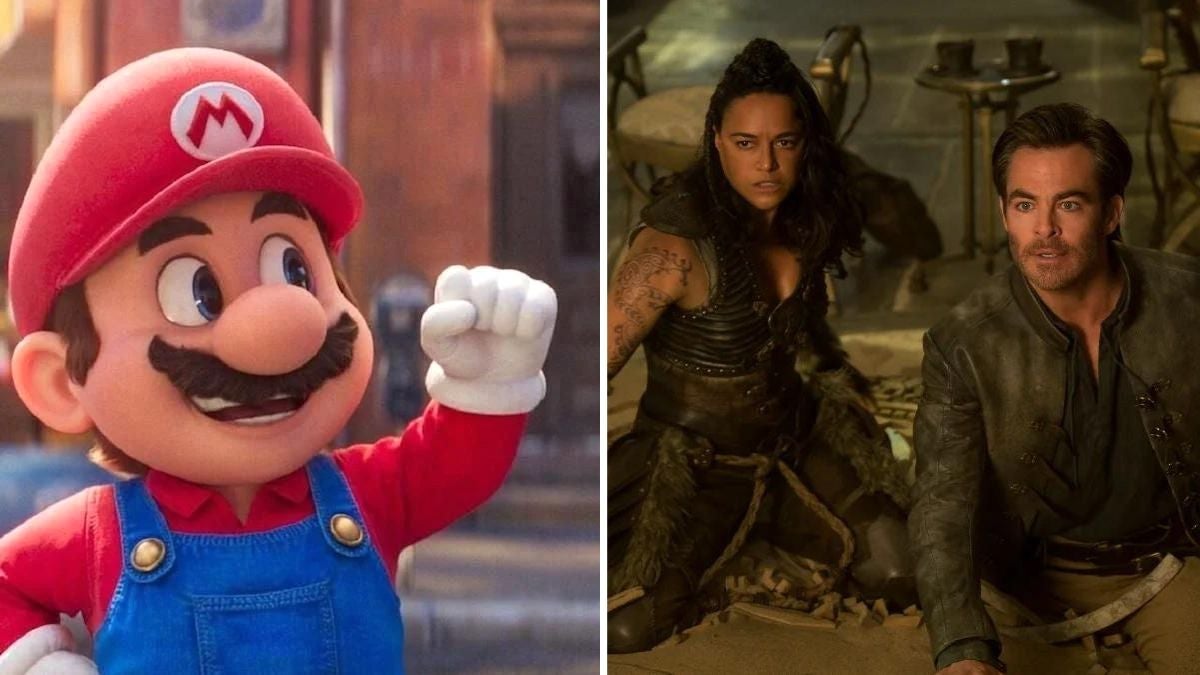Paramount’s well-reviewed fantasy film is struggling as general audiences are instead flocking to see the Nintendo icon
But for “Dungeons & Dragons,” the box office has yielded the extreme opposite result. Carrying a reported $150 million production budget before marketing, the fantasy adventure has grossed just $74 million domestic and $157 million worldwide after three weekends in theaters. In general, films at that budget need a global total of around $375 million-400 million to break even and “D&D” is going to fall well short of it; it has already fallen out of the top five on the domestic charts.
Granted, this weekend didn’t see considerable ticket sales for anything besides “Mario,” which is accounting for approximately 60% of all domestic revenue. Films like the R-rated “Renfield” and “The Pope’s Exorcist” had to settle for opening weekends of less than $10 million. The $90 million-budgeted “Air” is also set to fail to turn a theatrical profit, with Amazon Studios hoping the mature-skewing film can yield success in other ways.
But all of those films were conceived as titles that could appeal to a specific section of the moviegoing populace. “Dungeons & Dragons,” on the other hand, was an IP-branded spectacle hoping to attract a wide swath of moviegoers, something it had a puncher’s chance of doing upon release with its very strong critical and audience reception and Rotten Tomatoes scores of 90% critics and 93% audience.
Two weeks ago, this column outlined the ways in which “Dungeons & Dragons” could succeed or fail at that goal, and since Easter weekend the box office has played out largely as we predicted in the worst-case scenario. In order for “D&D” to have hopes of legging out in April, it needed to turn its word-of-mouth into long-lasting play among young adults, who ideally would have found the film after flocking to “Super Mario Bros.” during Easter weekend.
“I think with an IP like ‘Dungeons & Dragons,’ is there any situation in which a film like that has more than three weeks to prove its worth?” asked Boxoffice editor Daniel Loria. “Even successful fantasy franchises like ‘Lord of the Rings’ are based on defined novels while ‘Dungeons & Dragons’ is loosely based on a game with no defined story to adapt from and which doesn’t have the cultural weight of other blockbuster IP.”
But that hasn’t happened. Instead of playing like a family film, “Mario” has played since its opening weekend like a four-quadrant tentpole with the sort of popularity seen only recently by the likes of “Avatar: The Way of Water” and “Top Gun: Maverick.”
Rather than skewing towards families in its second weekend, as can be the case for some animated films while general audiences buy tickets for other films, “Mario” continued to perform evenly during its animation-record second weekend.
According to internal data from Universal, 41% of the second weekend crowd for “Mario” came from the 18-35 demographic, with 36% being 17 and under and 23% over 35. Even as kids, teens and their parents continue to make “Mario” their movie of choice, non-family moviegoers are turning out to the point that this Illumination title only dropped 41% from its opening weekend, defying the 58% average that The Numbers has calculated for films released since the start of 2022.
With “Mario” dominating the pop culture conversation and earning repeat viewings from people of all ages on top of drawing in newcomers, “Dungeons & Dragons” has been left fighting with the rest of the films in theaters for scraps, a situation no big-budget film wants to be in.
We will never know just how far “Dungeons & Dragons” would have been able to expand its reach with general audiences if the biggest video game adaptation of all time wasn’t in the way. It is possible that “Dungeons & Dragons” just isn’t a strong enough brand to support a tentpole budget, even with the tabletop game more popular than it was when New Line Cinema’s $45 million take on “D&D” flopped back in 2000.
Though reviews praised “D&D” for its accessibility to people who haven’t played the game it’s based on, it’s possible a lack of knowledge about the franchise’s lore may have kept the film from drawing significant interest among the uninitiated. The film’s marketing arguably failed to bridge the gap: Much of it focused on images of the Forgotten Realms’ ferocious beasts and the film’s ensemble cast.
Paramount will look to get back to its recent winning ways this summer with “Transformers: Rise of the Beasts” and “Mission Impossible — Dead Reckoning,” the latter of which could become the highest-grossing movie in the “M:I” franchise if the studio record success of “Top Gun: Maverick” leads to more interest in seeing Tom Cruise in his other famous role.
“Dungeons & Dragons,” meanwhile, will have to turn to post-theatrical revenue streams like video on demand and its upcoming release on Paramount+ to have a chance at turning any sort of profit. It’s a tough blow for a studio that recently has been able to steer films of various genres and budget sizes to critical and commercial success, but sometimes rave reviews just aren’t enough, not when you’re competing against a video game adaptation that is dominating the global theatrical marketplace in a way that would make Bowser burn with envy.



















